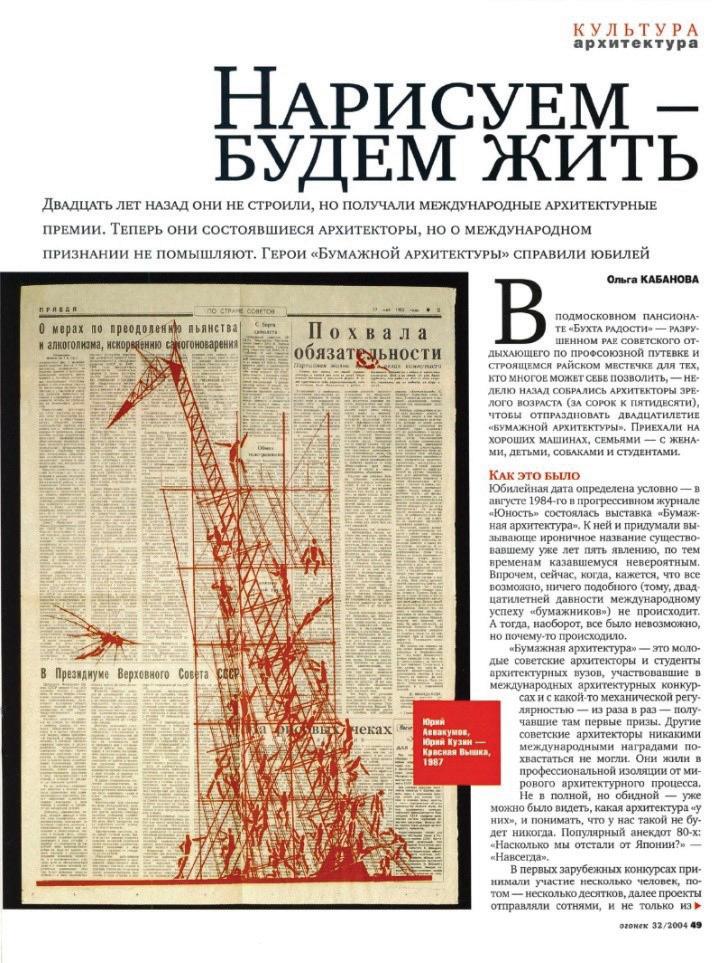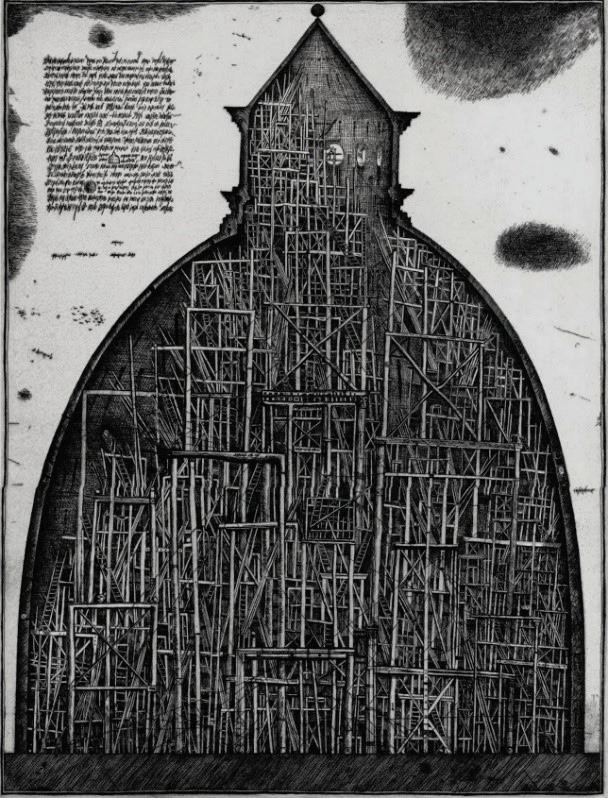
1 minute read
Mikhail Bode and Yuri Avvakumov, Pobediteli konkursov. In: Yuri Avvakumov, Bumazhnaia
III.1
III.2

8. Kabanova, Narisuem – budem zhit’, p.50 producers of architectural dreamscapes. Their architectural projects – filled with the “cities of the future” and the “rivers of time”7 – seemed to be their native habitat. Very few practicing architects wanted to challenge this whimsical vision, where graphic clarity and elegant drawings were mashed up with “bits of philosophy,” quotes from Japanese poetry and Ecclesiastes, and a palpable dose of gloom and despair.8
The two projects that Ogonek picked to illustrate the history of paper architecture usefully demarcate the crucial trends of this movement as a whole. Red Tower by Yuri Avvakumov and Yuri Kuzin (1987) depicted a crane surrounded by the sca olding cage with people distributed all over the two structures. Recalling the outline of Vladimir Tatlin’s Monument to the Third International, the Red Tower is situated in the middle of a page from Pravda, the main Soviet newspaper at the time. (Ill. 1) Published on May 17, 1985, this particular issue of the newspaper had an important historical significance: it announced the beginning of a major anti-alcohol campaign, which would become a key feature of Mikhail Gorbachev’s perestroika. Without explicitly acknowledging it, the Red Tower was framed by two historical signposts – the landmark of the revolutionary utopia epitomized by Tatlin and the dramatic socio-political change initiated by Gorbachev.
Apart from being heavily saturated with implicit and explicit cultural and historical references, the Red Tower points to one more crucial aspect of the late Soviet paper architecture. The architects’ vision is realized here




